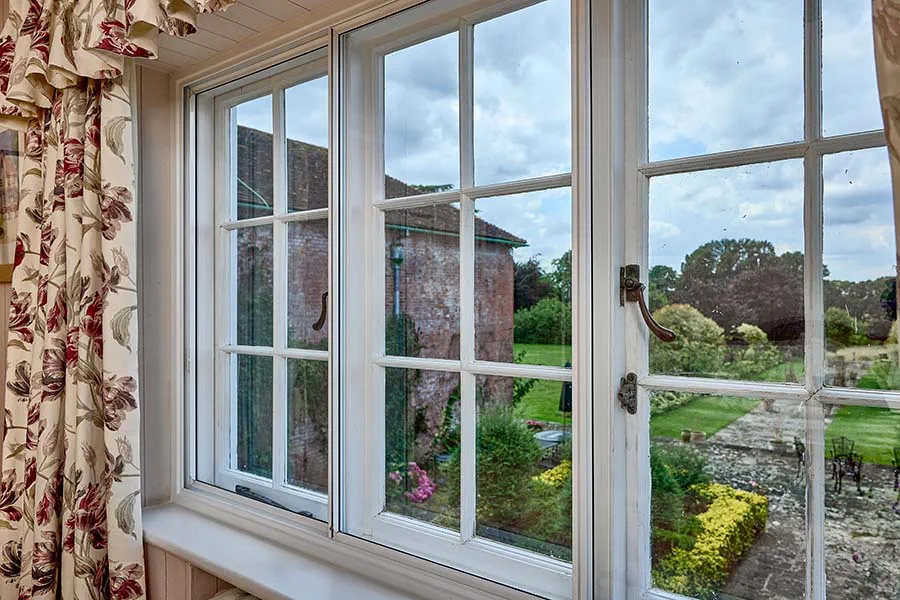
Introduction
For homeowners seeking to enhance energy efficiency without the high costs of full window replacements, secondary glazing stands out as an excellent alternative to double glazing. This method not only improves thermal insulation but also preserves the original aesthetics of historic and period properties. In this guide, we explore the benefits of secondary glazing, its impact on energy savings, and how it effectively reduces noise and condensation, all while maintaining the character of your existing windows.
Why Choose Secondary Glazing Over Double Glazing?
1. Superior Thermal Insulation
Secondary glazing creates an additional barrier that minimizes heat transfer, effectively keeping warm air inside during winter and preventing excessive heat from entering during summer. By installing a secondary glazing kit, homeowners can experience a noticeable reduction in heat loss, leading to lower energy bills and improved overall comfort.
Key Benefits:
- Reduces heat loss by up to 60%
- Enhances the thermal efficiency of existing windows
- Works well for listed buildings where window replacements are restricted
2. Cost-Effective Solution
Compared to double glazing, secondary glazing is significantly more affordable while still providing excellent insulation benefits. Homeowners can upgrade their windows without undergoing costly and invasive full replacements.
| Glazing Type | Average Cost Per Window | Energy Savings Potential |
| Single Glazing | Low | Minimal |
| Double Glazing | High | Significant |
| Secondary Glazing | Moderate | High |
With the ability to retrofit secondary glazing onto existing sash windows, this option becomes an attractive and cost-efficient alternative for homeowners looking to improve their insulation on a budget.
3. Excellent Noise Reduction
Living in a bustling urban environment can mean constant noise pollution. Secondary glazing significantly improves sound insulation, reducing external noise by up to 70%. This is achieved by creating an air gap between the existing window and the secondary pane, acting as an effective sound barrier.
Best Soundproofing Combinations:
- Laminated Glass: Best for reducing high-frequency noises like traffic and sirens
- Acoustic Glass: Specifically designed to block sound vibrations
- Wider Air Gap: A gap of 100-150mm between the panes enhances sound insulation
4. Minimizes Condensation Issues
Condensation is a common problem with single-pane windows, leading to mold growth and water damage. Secondary glazing significantly reduces condensation by adding an insulating layer, preventing warm indoor air from meeting the cold surface of the external glass.
5. Perfect for Period and Listed Buildings
For homeowners with historic or listed buildings, replacing windows with modern double glazing can often be restricted due to conservation regulations. Secondary glazing provides an unobtrusive alternative that enhances insulation while preserving the original aesthetic of sash windows and heritage properties.
Installing Secondary Glazing: A Step-by-Step Guide
For DIY enthusiasts, installing secondary glazing is a straightforward process. Follow these steps to upgrade your home’s insulation effectively:
Gather Necessary Tools and Materials
Tools Required:
- Screwdriver
- Measuring tape
- Spirit level
- Sealant
Materials:
- Secondary glazing kit
- Aluminum or uPVC framing
- Acoustic or thermal glass panel
Measure Your Window Frame
Accurate measurements ensure a perfect fit for the secondary glazing panel. Measure both the height and width of the existing window frame, allowing a 2-5mm clearance for easy installation.
Install the Secondary Glazing Frame
Secure the frame inside the window reveal or on the existing window sash, ensuring a tight fit to maximize insulation and noise reduction.
Attach the Glazing Panel
Insert the glass panel into the frame and use adhesive strips or mechanical fasteners to hold it in place.
Seal the Edges
Apply a high-quality sealant around the frame to prevent air leaks and enhance insulation.
For optimal insulation performance, ensure there is a 10-20mm air gap between the primary window and the secondary glazing.
graph TD;
A[Existing Window] –>|10-20mm Air Gap| B[Secondary Glazing Panel];
B –> C[Improved Insulation & Soundproofing];
Comparing Secondary Glazing to Other Glazing Options
| Feature | Single Glazing | Double Glazing | Secondary Glazing |
| Energy Efficiency | Low | High | High |
| Cost | Low | High | Moderate |
| Noise Reduction | Minimal | Good | Excellent (Up to 70%) |
| Condensation Control | Poor | Good | Excellent |
| Ideal for Listed Buildings | No | No | Yes |
Conclusion: A Smarter Choice for Energy Efficiency
Secondary glazing is a game-changing solution for homeowners seeking improved insulation without the expense and hassle of double glazing. With benefits ranging from enhanced thermal efficiency and noise reduction to affordability and compatibility with period properties, this alternative provides a well-balanced and effective way to upgrade your home’s energy performance.
By installing secondary glazing, homeowners can enjoy a warmer, quieter, and more cost-efficient living environment while maintaining the beauty and integrity of their existing windows. Whether you opt for a DIY installation or a professional fitting, this alternative to double glazing is a smart investment for a more comfortable home.